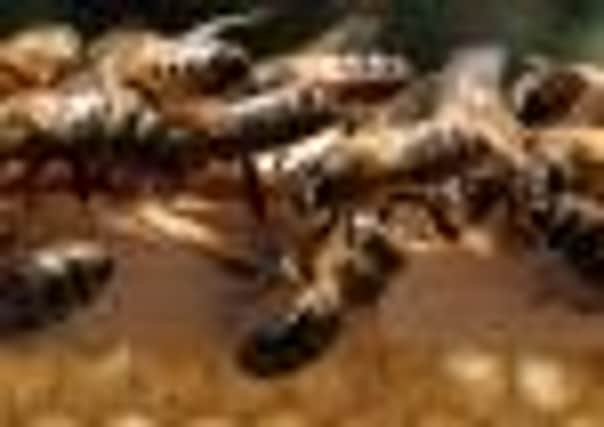Erikka Askeland: Getting a buzz out of stalking bumblebees


As a bee stalker I am getting to the point where I’m starting to worry if the little creatures, wary of having their private goings on in the garden being intruded upon, should be called to the Leveson inquiry.
Not that the bees could tell him much. Although linguists have discovered that they do communicate with each other through the media of dance. By turning around in a circle and waggling their bottoms, bees tell their friends where the best sources of food are. The clever little things.
Advertisement
Hide AdAdvertisement
Hide AdIt all started when the Bumblebee Conservation Trust put out a call to the public to chart the UK’s population of the fuzzy striped beings.
The Bee Watch programme aims to find out more about Britain’s 24 known species, where they are and how many. This is useful to researchers, because bees are in decline. And in an effort to compile reliable data, the trust has devised a clever “crowd sourcing” website that you can upload photos and pinpoint the location of where they were taken.
Since the call went out my trips to the garden to smoke fags have been transformed. Now I make sure to carry my smart phone with me. Although as a neophyte I have occasionally forgotten, which means spotting a bee often leads to me delivering an elbow into the side of the Man in My Life, whispering loudly “look there’s a bee, get it, get it”.
He is much more vigilant about carrying his phone with him since that fateful night we became accidently locked out of our flat – but to explain further would be to digress.
Submitting the bee snaps to the website, there is a little guide to help you identify what kind of bee you have captured. But you also get a little note back confirming it. I have discovered it is important to ensure you get a good view of its waggly little bottom – also an important identifier, and a key skill for candid camera shot takers of both bees and starlets.
As it turns out, the bees I have snapped are common garden bumblebees. In my burgeoning career as a paparazzo, I suspect these are the equivalent of capturing a cast member of The Only Way is Essex. Not that the researchers at the trust seem disappointed, but I’d bet they would be much more excited if I was able to document something like the rare tree bumblebee, which seems to be the bee world’s version of Helen Mirren in a bikini.
As a child I used to fear bees, but even then I knew it was actually wasps – those far less socially useful beasts – that would sting you repeatedly as you ran away screaming.
But my quest is made more urgent by fears – that are increasingly being proven – that modern forms of agriculture are threatening bees. According to the Bee Conservation Trust, in order to flourish they need wildflowers and hedgerows, which are often removed in farming.
Advertisement
Hide AdAdvertisement
Hide AdIn the last five years, there is also disturbing evidence that pesticides are causing a mysterious bee plague called colony collapse disorder. Scientists are blaming “systemic” pesticides that use a type of nicotine, and which are designed to wreak havoc on the central nervous system of pests causing them to become paralysed and then die.
The pesticide makers insist the chemicals are safe for bees, as tested in laboratory conditions. But researchers, such as David Goulson, of the University of Stirling, have shown contact with these chemicals in the wild reduces the size and numbers of queen bees, and causes the honey bees themselves to become disoriented and fail to return to their hives.
A ban on what is a widely used pesticide would be devastating for farming, but a world without bees – which we rely on to pollinate flowers, fruit, vegetables and nuts – would be far worse.
What I would tell Lord Justice Leveson regarding my intrusion into their lives is that I am just doing my bit. That the frustration of getting the camera app ready and focused, only to have the little blighter zoom off to a better flower at the other end of the garden, is worth it.